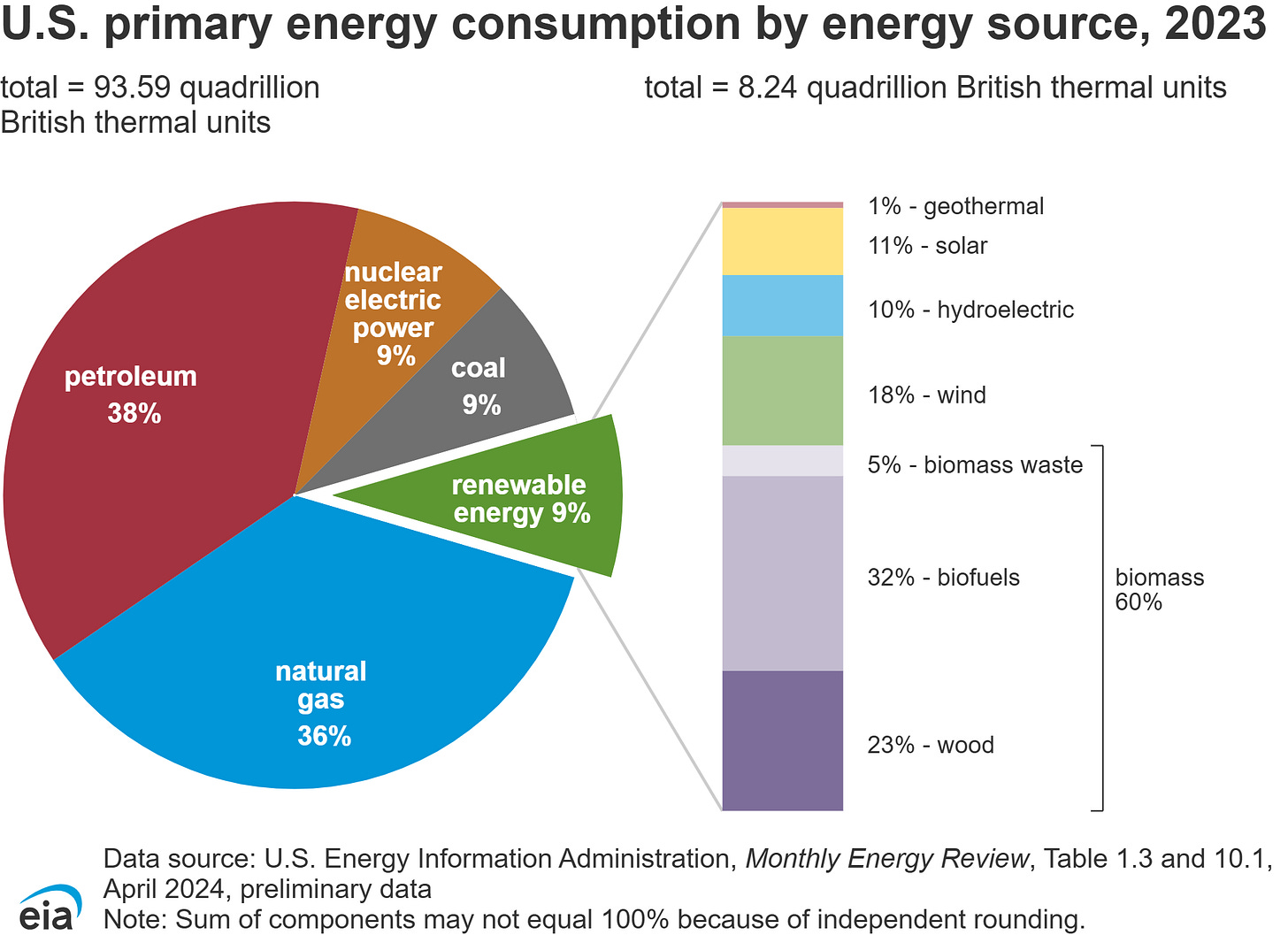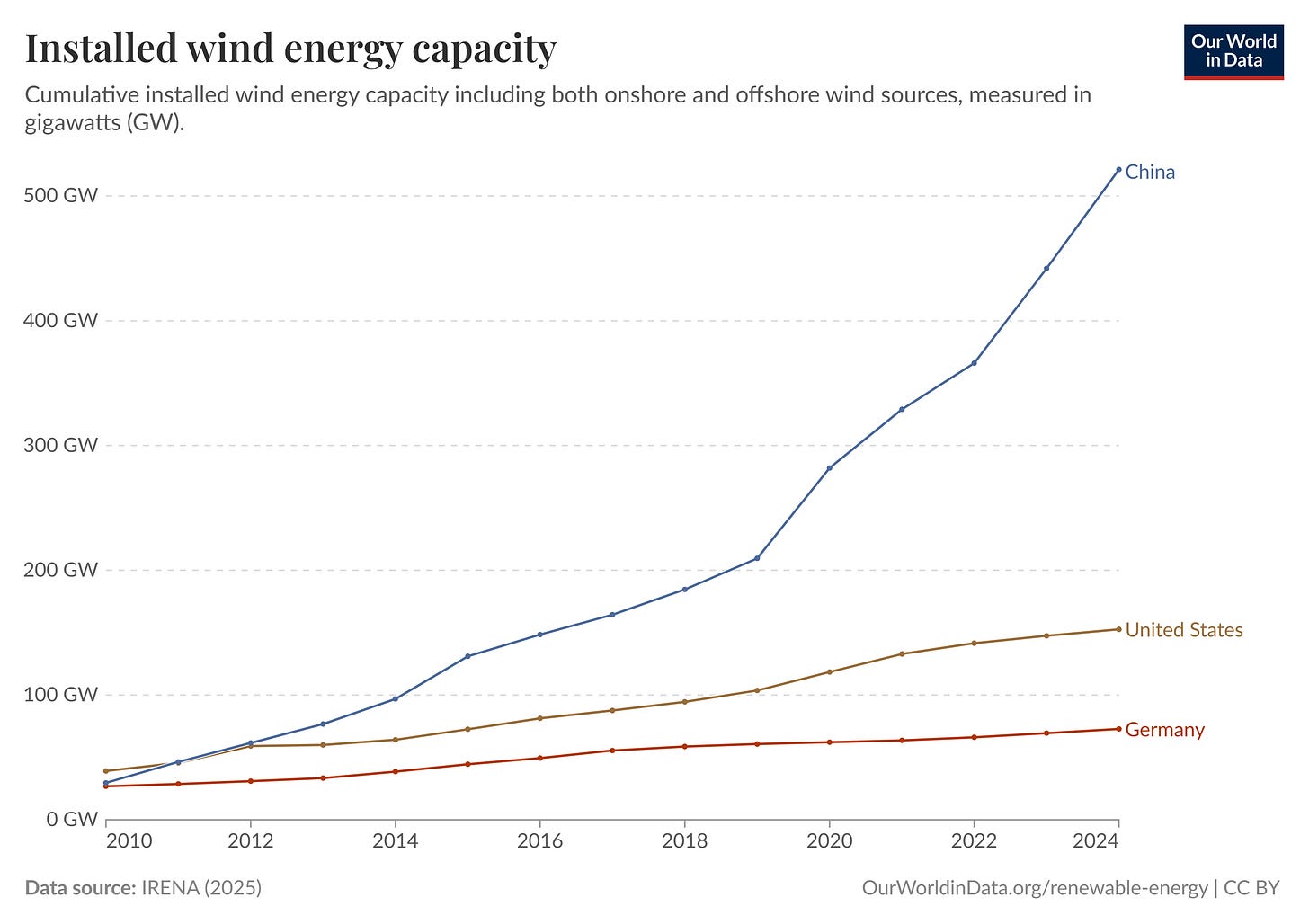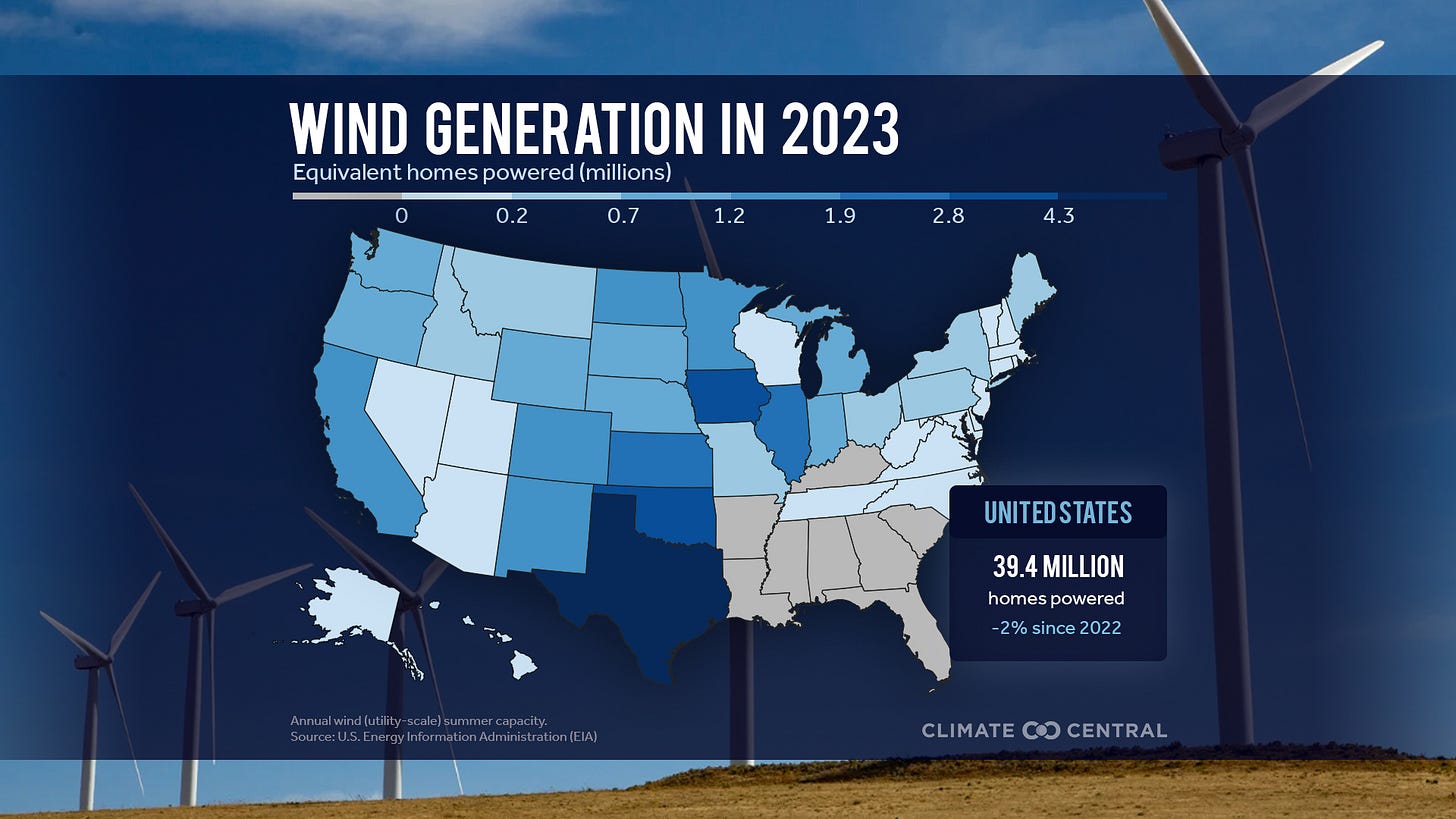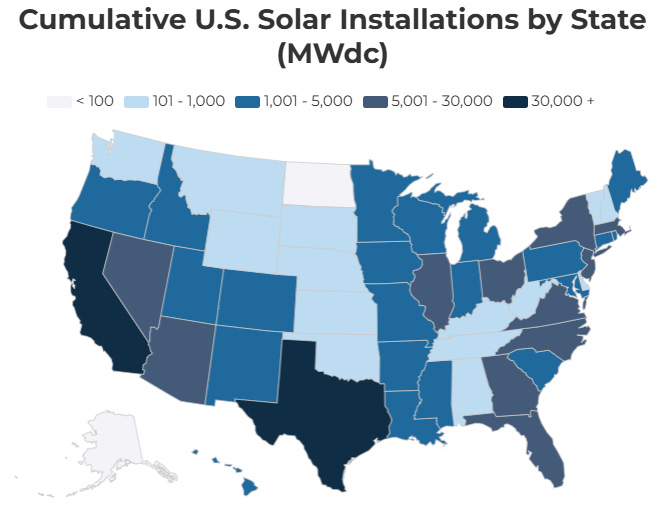What's Up With: Renewables
The future of wind and solar energy in the US.
If you find this article interesting, click the like button for me! I would greatly appreciate it :)
Energy consumption encompasses more than just electricity. While renewables accounted for 21% of electricity in 2023, they only account for 9% of total energy consumption. This also includes transportation, heating, and industrial use. While it would be nice to have a perfectly sustainable grid, the reality is different. In this series, I will highlight the roles of various energy sources and their outlook. For the year 2023, fossil fuels accounted for 82%, nuclear 9%, biomass 5.4%, and renewables 3.6%.
This is a series I’m going to do where I will research and update my outlook on each energy industry: renewables, batteries, nuclear, and fossil fuels. This week is renewables.
Renewables are the exciting new kid on the block here to save the day, or at least they were. They were building momentum under the Biden administration as far as policy (IRA, BIL) and sentiment (grandiose predictions of exponential growth). There are still die-hard proponents and opponents to renewables, but for the most part, the politics and sentiment have quelled alongside a less favorable Trump administration.
The EIA likes to make things look better than they are, so let’s get a few things straight first. Biomass is net-zero in theory, but is not in practice. To use as fuel over time, in the best case, a tree will be cut at the same size as its predecessor was burnt (net-zero). Adding in the periphery logging, transportation, and pellitization, it is not. This may be reasonable within the US, but with 77% of us wood pellets used for export on large diesel cargo ships and shipped overseas, it is laughable to consider it renewable.
Further, hydro and geothermal are great forms of energy, especially if there are breakthroughs in drilling technology; however, they have scaling and geography restrictions currently. This leaves the real renewables (wind and solar) at a meager 2.6% of total energy consumption for the US in 2023. Nevertheless, they are fast-growing and viewed by some as the future, so it’s worth taking a look.
Wind
Windmills were a significant power provider in Europe until steam and combustion engines were invented. Modern windmills are many times better than their previous generations, but still have lower energy density than nearly all other forms of energy generation. Still, certain regions are remote and have plenty of wind, such as offshore or in the Midwest, making them an attractive energy source.
Unsurprisingly, the two major economies are leading the way when it comes to renewable energy. China, however, is miles ahead of any other country with its infrastructure investments. In 2024 alone, China installed over double the wind capacity as the US and Germany combined. Nevertheless, there remains growth in wind capacity in all three of these major countries. While China’s wind industry is growing, it is shrinking in the US.
Within the US, most wind is generated in the Midwest, Texas, and the West Coast. This and offshore are naturally where it makes sense to build. There is 24GW of offshore wind and an outlook of continued growth of onshore wind in the pipeline.
Onshore wind farms have a capacity factor (energy generated/energy capacity) of 34% in the US, while offshore farms push it as high as 55%. While better, offshore wind farms have higher upfront costs and maintenance costs. The best-performing wind farm in the world is the Hywind farm off Scotland’s coast. It boasts a record 54% capacity factor during its first 5 years of operation. Unfortunately, after just 8 years, it will have to be taken back to Norway to undergo significant maintenance for 4-5 months. While operators may build more reliable infrastructure in the future, this is not good longevity compared to the decades of operation with minor maintenance at coal and nuclear power plants, for example.
The wind industry is struggling big time. Siemens Energy is focusing on cost-cutting measures, while Orsted is busy blaming the change in political administration in the US for its issues. With high costs and poor energy utilization, I am not very favorable of wind farms in general. You can blame the hostile political environment, but the industry was facing issues well before Trump took office.
Solar
China also blows the US and Germany out of the water when it comes to solar installations, as well as being the dominant producer of solar polysilicon, wafers, cells, and modules.
Unlike wind, which is geographically constrained, wind is a popular addition in most of the US. Some areas, like Texas and California, stand out as having more installations.
Just like wind can be split into two categories, solar can be split into utility, commercial, industrial, and residential categories. Commercial and industrial make up a relatively small share, so it can be said that utility is ~2/3rds and residential is ~1/3 of the solar capacity in the US.
The capacity factor of solar in the US is 23% which is the lowest of any main source. What solar has going for it is that it can be placed in “waste areas” like roofs, car parks, and unused land. Both sources need to be paired with storage solutions like batteries to ever be relied upon by the grid.
Despite the low capacity factor and Chinese supply chain, solar has the highest new installation capacity of any energy source. While wind growth slowed in 2024, solar did not, with utility-scale installations offsetting slowing additions for residential in 2024.
Final Thoughts
The Biden administration set lofty goals like 30GW of offshore wind by 2030 and 80% clean electricity by 2030. These policies will come up short. A political shift in the Trump administration solidified it, but there were challenges in the lofty plans even with the IRA/BIL. The wind and solar industries are still growing, and will continue to grow, but not at the exponential pace some claim of technological superiority. Technological, geopolitical, political, and economic concerns are all reasons that renewables will face a boring path of mild, continued growth in the US. Withholding moral judgment on climate change, without subsidy, there is not much to get excited about in the renewables industry. You have to hope economic conditions get better and democrats retake power in 2028 to truly have a positive view. Until next week,
-Grayson
Socials
Twitter/X - @graysonhoteling
LinkedIn - Grayson Hoteling
Archive - The Gray Area
Notes - The Gray Area
Promotions
Sign up for TradingView










See no future in utility scale wind given lifecycle costs of creation and disposal. Understand maintenance costs are also a factor. Subsides make it possible. Unclear why Europe still finds it useful.
Solar remains viable. But the $/watt of residential seems stuck perhaps because installation costs so variable. All homes ought to be designed for solar installation during build.
Progress underway for better battery storage for both utility scale and home use. Will Vanadium flow ever become real and more affordable than Li? I do see StorEn has a home scale V-flow battery that can compete with Musk’s home Li-battery. Don’t need best size just least lifecycle costs.